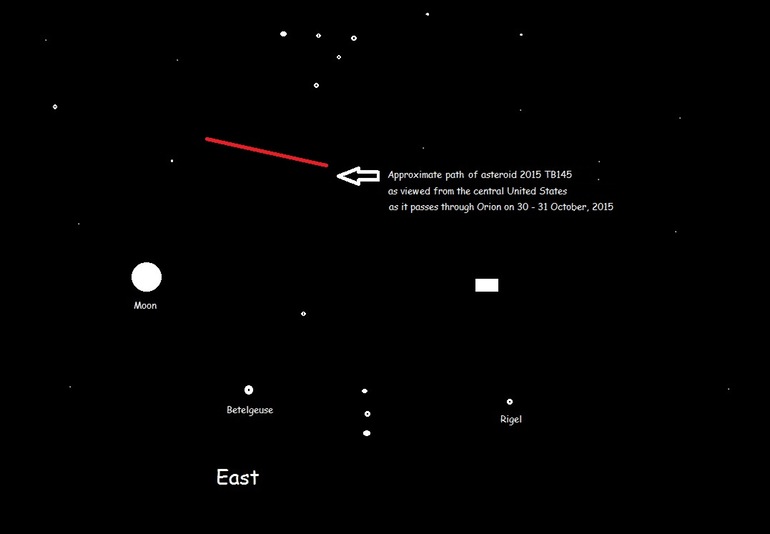
Before you start panicking, NASA says that the object is expected to safely pass by the Earth and is following an eccentric and high-inclination orbit, which may help explain why it was not discovered until October 10 of this year.
Much closer than a "near miss" of 3.1 lunar distances by another recent asteroid, 2004 BL86, 2015 TB145 is of a similar size or greater than that object, but without an accompanying moon. Nevertheless, this now qualifies as the latest known close encounter, after 2004 XP14 in July 2006 at 1.1 lunar distances, and until the asteroid 1999 AN10 swings by Earth at less than one lunar distance sometime in August 2027.
Though possessing an absolute maximum magnitude of around 19.9, with which astronomers were originally able to determine its size to within a factor of 2, the relative magnitude when observed from the Earth at its closest approach is expected to be less than 10. As such, the asteroid won't be visible with the naked eye, but should be observable using an amateur telescope of reasonable size and magnification.

As unexpected as this encounter is, however, it also provides a perfect opportunity for many observatories to try out their imaging and radar-tracking capabilities before the next large rock encounter with 1999 AN10 in 2027. The radio astronomy installations at both DSN Goldstone, California and the Arecibo array in Puerto Rico intend to track and record the path of 2015 TB145 via radar, which should provide invaluable data for future near-Earth asteroid encounters (of which there are quite a few known according to NASA's Near-Earth Object Program).
This data may also help improve the earlier detection of close-encounter objects and enhance warning times, as well as contribute to the knowledge development of the proposed NASA Asteroid Redirect Mission that is designed to divert any such celestial object whose trajectory may put it on a collision course with our planet.
Source: NASA JPL



Reader Comments
to our Newsletter